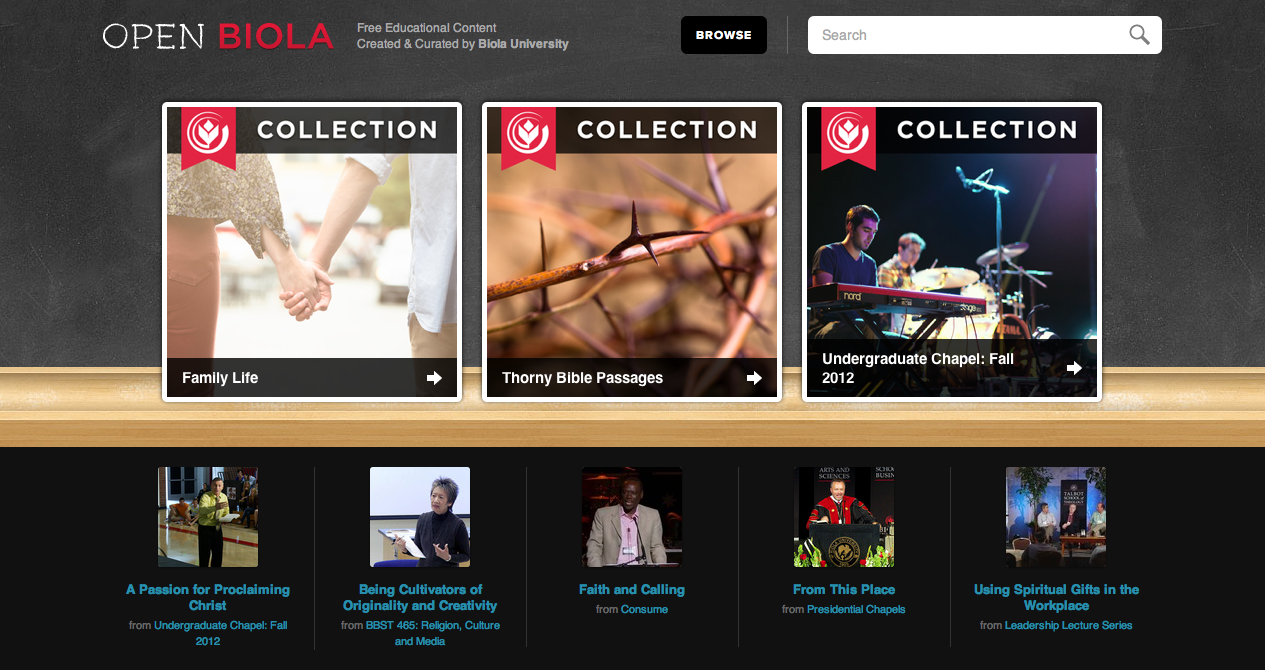
Courtesy | open.biola.edu
In an effort to engage with a rapidly expanding, global education system, Biola recently launched Open Biola, a database filled with free learning collections specifically directed at people not connected to the La Mirada campus.
Officially dedicated on Aug. 21, the website features classroom lectures, chapel speakers, conference videos, art galleries and other tools. The name stems from the idea of Biola having “open hands” that extend its resources to the world, provost David Nystrom said.
"Open Biola … by definition, is free,’” he said, adding that at a basic level, “it just means people who aren’t physically here can [use] coursework that we offer.”
Unique system sets Open Biola apart from other universities
Nystrom clarified that Open Biola feeds into the larger Biola Global Access, a movement designed to make more Biola assets available to the public. In order to highlight Biola’s most well-known content, the decision was made to focus on Bible classes initially. This is a different move from that of other universities distributing content online, including Yale University and Massachusetts Institute of Technology.
“We made some strategic decisions a little over a year ago [on] what classes to archive first, and one of those groups was the 30 units of Bible,” Nystrom said. “That’s something we do really well … so that’s one of the best places to start.”
Some students are wondering if Biola’s posting free lecture recordings online diminishes the value of the education they are paying for, said senior director of brand marketing and creative production, Brian Miller. He dismissed this fear, saying that out of all the content in Biola’s history, only a small piece of it is going online.
Content benefits both those in and out of community
“The idea with Open Biola is just shaving off a part of that [content],” he said. “We’re not taking every lecture … and even the lectures that we’re taking, sometimes it’s just a portion.”
Although one of the easily identified benefits of Open Biola is its accessibility to people beyond the scope of the university, Miller pointed out that it is just as useful to students enrolled at Biola, especially in the realm of chapel recordings.
“The goal is to get every chapel up within about a week or so … of when the chapel occurs,” he said. “It can be an opportunity to go back and view a chapel, even a chapel you may have [already] watched.”
Utilizing technology to increase versatility
According to Miller, Open Biola will continue to grow and change to correspond with the changing technologies. One of the ways it has already begun that process is by using a technology called Responsive Web Design, which adapts the format of the website to the device being used, such as a smartphone or tablet. This ability, Miller said, is partially responsible for the website’s helpfulness.
“Anyone with a desktop computer, or a mobile device, or a tablet, they have access to this content now anywhere in the world,” he said. “No matter … what part of the world [they’re] in, they can pull up this content and use it as a tool. … So they appreciate it.”
As of press date, the total amount of content available on Open Biola was 1,319 items, written or released by 433 authors and constituting 829 hours of video.







